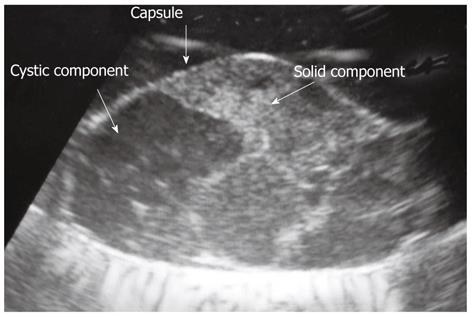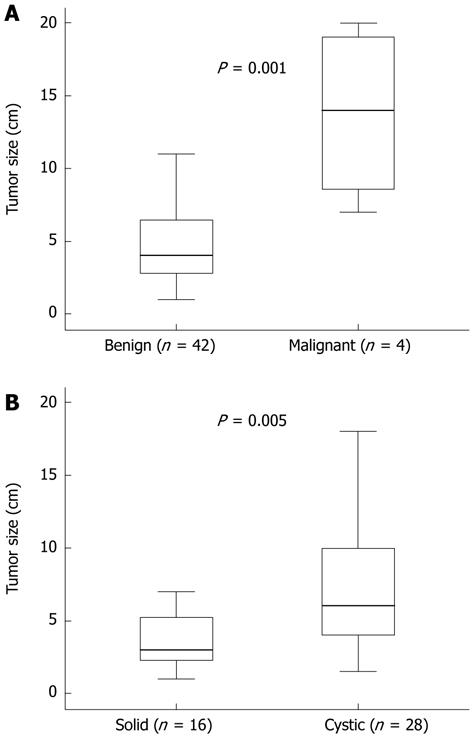Copyright
©2012 Baishideng Publishing Group Co.
World J Gastroenterol. Apr 7, 2012; 18(13): 1538-1544
Published online Apr 7, 2012. doi: 10.3748/wjg.v18.i13.1538
Published online Apr 7, 2012. doi: 10.3748/wjg.v18.i13.1538
Figure 1 Contrast-enhanced computed tomography scan obtained in the arterial phase showing a multilocular cystic mass in the uncinate process of the pancreas.
No pancreatic ductal dilatation or invasion into adjacent arteries or portal vein are identified.
Figure 2 Intraoperative ultrasound showing the well-encapsulated pancreatic mass that is composed of solid and cystic components.
Figure 3 Microscopic examination demonstrating spindle cells without nuclear atypism (HE x 100).
Immunohistochemical staining for S-100 protein was positive. HE: Hematoxylin and eosin.
Figure 4 Analysis for relation between tumor size and malignant potential and tumor nature (solid or cystic) in all 47 cases of pancreatic schwannoma.
A: Relationship between tumor size and malignancy. Larger tumor size is related to malignant tumor (13.8 ± 6.2 cm for malignancy vs 5.5 ± 4.4 cm for benign, P = 0.001); B: Relationship between tumor size and nature of tumor. Larger tumor size is related to cystic degeneration (13.8 ± 6.2 cm for cystic tumor vs 5.5 ± 4.4 cm for solid tumor, P = 0.005).
- Citation: Moriya T, Kimura W, Hirai I, Takeshita A, Tezuka K, Watanabe T, Mizutani M, Fuse A. Pancreatic schwannoma: Case report and an updated 30-year review of the literature yielding 47 cases. World J Gastroenterol 2012; 18(13): 1538-1544
- URL: https://www.wjgnet.com/1007-9327/full/v18/i13/1538.htm
- DOI: https://dx.doi.org/10.3748/wjg.v18.i13.1538












